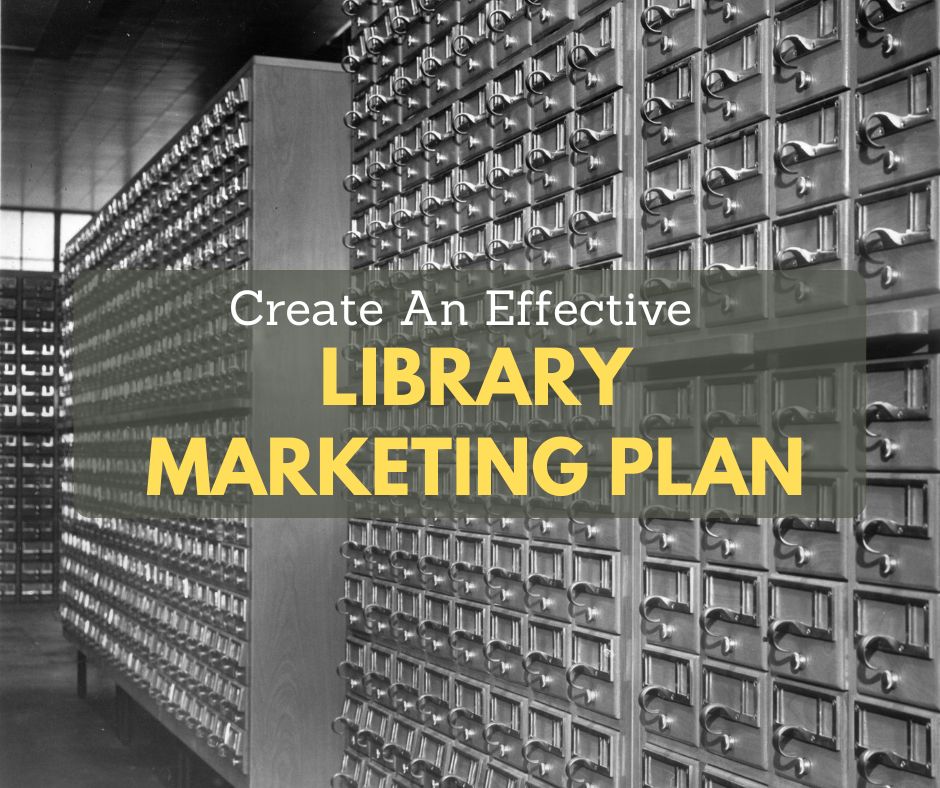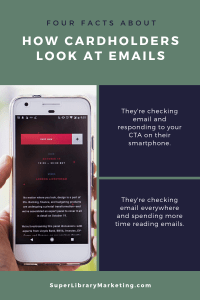
The first time I went to a conference, I made a plan.
I decided which sessions I would attend weeks before the conference began. I studied the floor map of the convention center so I could plot the best way to get from room to room. I made a list of local restaurants and tourist attractions within walking distance of my hotel so that I could make the most of my free time.
Am I bonkers? Nope. I am a planner.
A plan provides a guide for action. It ensures goals are met and time and resources are used wisely.
There are times when spontaneity is called for. But library marketing is not one of them. A marketing plan is key for the success of any type of library promotion.
What exactly is a library marketing plan?
A library marketing plan is a tool you use to help to achieve your library’s overall goals. It lays out the steps involved in getting a promotion out into the world. It helps you decide how and when promotional work will be done for a pre-determined time in a specific way.
A library marketing plan also ensures everyone knows the end goal of your marketing efforts. It sets deadlines. It keeps people accountable. And it clarifies how you will measure your results.
You don’t need a plan for everything you promote at your library. You do need a plan if you are creating a campaign that lasts for more than several weeks.
How to put your marketing plan together
Scroll down to the bottom of this post for a list of free project planning websites. They will help you with the execution of your plan. At the bottom of this post, you’ll also find a customizable template to download. It’s based off the library marketing plan spreadsheet I used for years.
Know the thing you are promoting inside and out.
Be sure you can answer every single question about the thing you are promoting. You must become an expert on the event, service, or item you will promote.
Ask yourself, what problem will this solve for my patrons? How easy is it to use? What are the features that can’t be found at any of my competitors?
Clearly define your end goal.
Use the SMART goal framework to ensure you and your co-workers know exactly what you are aiming to achieve. SMART goals are specific, measurable, attainable, relevant, and timely.
So, if you are looking to increase brand awareness, set an actual, measurable end goal like: “Within the next 6 months, we want 50 percent of residents living within a 30-mile radius of our Main Library to know that we have renovated the building and to be able to name at least one new service available at the library.”
Determine your target audience.
Many library marketers say their target audience is “our cardholders.” Be more specific.
Ask yourself:
- Which cardholders?
- How old are they?
- How often do they use the library?
Fill out your picture of your target audience with as many demographic characteristics as you can. This gives you and everyone working on the plan a picture of who you are trying to reach.
Analyze your competitors.
Research anyone providing a similar program, service, or product. Ask:
- What are they doing well?
- What are they doing poorly?
- What are the things that differentiate your library from their business?
These are your marketing advantages. You can use this information to create messaging that tells your target audience why they should use your library service, instead of a competitor.
Create the message.
Get the message or elevator pitch for your promotion set. It’s the most important part of your plan. You need it to create all the tactics you will use to promote your library.
Choose your tactics.
Go through all the available channels at your disposal for marketing and decide which ones will work best to reach your end goals.
You do not have to use everything that’s available to you. Sometimes, a video will work well and sometimes an email will do a better job. Not every promotion needs print materials, a press release, or a digital sign.
You know best how your target audience reacts to each tactic and which will bring you the best results. If you have a budget, decide how you’ll spend it during this step.
Set the schedule.
Every library has a different approach to its promotional schedule. I am a fan of tiered distribution of marketing. The approach takes advantage of a consumer cycle of excitement. Here’s how it works:
- Release one or two promotional tactics at the beginning of your promotional cycle, like a social media post and a press release. The promotion gets some play, and excitement builds in the consumer base. It gets shared and people talk about it… and then the excitement dies out.
- Release the second tactic, like an email, and the people who see the email get excited and start talking about it and sharing it, and then their excitement dies out.
- Release a video, and that builds excitement and gets shared, and the excitement then dies out. And so on!
When you use the tiered distribution approach, you get a longer promotional thread. Your promotions will be more successful because the excitement around them builds over time, not in one big burst.
It is also easier on the person running the marketing! It gives you a small break in between each tactic and creates time for you to measure the success of each tactic individually.
Assign tasks.
Delegate jobs and deadlines for appropriate staff. If you need help from another library department, assign their deadline now so they have plenty of time to get you the information you need.
Measure results.
Don’t forget to measure and record the reaction to each piece of your marketing plan. Analyze what worked and what did not, so you can put that knowledge to use next time.
Free or cheap project management solutions
Clickup: the free plan will work for small libraries. The unlimited plan is very affordable and would work well for medium to large libraries.
SmartSheet: their lowest plan tier is a little more expensive than ClickUp but has more integrations.
Asana: this is what my employer NoveList uses. It makes is easy to assign tasks and deadlines.
Marketing plan template
I’ve created a customizable marketing plan spreadsheet. It includes my suggestions for the timing of promotional tactics for an event or service promotion.
You can delete or add columns based on the tactics available to your library and the size of your library. Download it here.
Related Advice
Subscribe to this blog and you’ll receive an email every time I post. To do that, enter your email address and click on the “Follow” button in the lower left-hand corner of the page.











